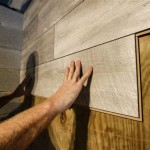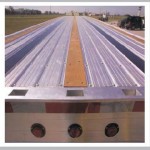How Wide Is A Roll Of Vinyl Flooring In Inches?
Vinyl flooring is a popular choice for residential and commercial spaces due to its durability, water resistance, and relatively low cost. When planning a vinyl flooring installation, understanding the standard dimensions of vinyl rolls is crucial for accurate material estimation and efficient layout design. The width of a vinyl roll directly impacts how many seams will be present in the finished floor, the amount of waste generated during installation, and the overall aesthetic appeal of the space. This article provides a detailed overview of standard vinyl roll widths, factors influencing width availability, and considerations for choosing the right width for a project.
Vinyl flooring is available in various formats, including sheet vinyl, vinyl planks, and vinyl tiles. This article focuses specifically on sheet vinyl, which is sold in rolls. Understanding the typical widths available for sheet vinyl is important for accurately calculating material needed for a flooring project and minimizing waste. A key factor in determining the appropriate roll width is the room's dimensions.
Sheet vinyl flooring is typically manufactured in a limited range of standard widths. These widths are designed to accommodate common room sizes and minimize the number of seams required during installation. While some manufacturers may offer custom widths for large-scale projects, the vast majority of retail vinyl flooring is sold in these standard sizes. Knowing these standard widths helps when planning the layout and reducing waste.
Standard Vinyl Roll Widths in Inches
The most common widths for vinyl flooring rolls are 6 feet, 12 feet, and 13 feet 6 inches. These widths are designed to accommodate the dimensions of many standard-sized rooms, thereby minimizing the need for seams. Each width presents unique advantages and disadvantages depending on the project's specific requirements.
6-Foot Wide Rolls: Rolls with a 6-foot width are often a practical choice for smaller rooms, such as bathrooms, laundry rooms, or small kitchens. This width is easier to handle and maneuver, particularly in confined spaces. The smaller width also translates to less waste when installing in narrow rooms. However, for larger rooms, using 6-foot wide rolls will invariably result in multiple seams, which can be visually less appealing and potentially more vulnerable to moisture penetration over time.
12-Foot Wide Rolls: Rolls that are 12-feet wide are the most common and versatile option for many residential installations. This width is suitable for medium-sized rooms, such as bedrooms, living rooms, and larger kitchens. In many cases, a 12-foot wide roll can cover the entire width of a room without requiring any seams. This creates a seamless and visually appealing floor surface that is also easier to clean and maintain. However, maneuvering a 12-foot wide roll can be more challenging, especially in smaller spaces or around obstacles.
13-Foot 6-Inch Wide Rolls: Rolls with a 13-foot 6-inch width are typically used in larger rooms or commercial spaces where minimizing seams is a priority. This width can accommodate wider rooms and reduce the number of seams required, resulting in a more uniform and aesthetically pleasing floor surface. While offering the benefit of fewer seams, handling and installing 13-foot 6-inch wide rolls can be difficult and often requires professional assistance. The increased size and weight make them less manageable for DIY projects.
Factors Influencing Vinyl Roll Width Availability
While standard widths are widely available, several factors can influence the actual widths offered by specific retailers or manufacturers. These factors can range from market demand to manufacturing limitations and should be considered when sourcing vinyl flooring for a project.
Manufacturer's Product Line: Each manufacturer has a unique product line that includes specific styles, patterns, and widths of vinyl flooring. Some manufacturers may focus on producing a limited range of widths, while others offer a wider variety to cater to different market segments. The manufacturer's specific target market and production capabilities will influence the widths they offer.
Pattern and Design: The pattern and design of the vinyl flooring can also influence the available widths. Some patterns are designed to be seamlessly repeated across wider widths, while others may be better suited for narrower rolls. Intricate or large-scale patterns may require wider rolls to ensure that the design is not interrupted by seams. The aesthetic considerations of the pattern often dictate the available width options.
Regional Availability: The availability of specific vinyl roll widths can vary depending on the region. Some regions may have a higher demand for certain widths due to the prevalence of specific room sizes or architectural styles. Local retailers and distributors will typically stock the widths that are most popular in their area. Market trends and local building practices can influence the availability of different widths.
Custom Orders: In some cases, manufacturers may offer custom widths for large-scale projects. This option is typically available for commercial installations or residential projects with unique requirements. Custom orders can provide greater flexibility in terms of width selection, but they often come with higher costs and longer lead times. The feasibility of a custom order depends on the manufacturer's capabilities and the project's budget.
Choosing the Right Vinyl Roll Width for a Project
Selecting the appropriate vinyl roll width is crucial for a successful flooring installation. Careful consideration of room dimensions, seam placement, and installation complexity is essential for making the right choice.
Measure the Room Dimensions: Before purchasing any vinyl flooring, accurately measure the length and width of the room. Pay particular attention to any irregularities in the shape of the room, such as alcoves or angled walls. These measurements will help determine the minimum width required to cover the room with minimal seams. Accurate measurements are the foundation for a successful installation.
Minimize Seams: Whenever possible, choose a vinyl roll width that will minimize the number of seams in the finished floor. Seams can detract from the overall aesthetic appeal of the floor and may be more susceptible to moisture damage over time. Opting for a wider roll can often eliminate or reduce the number of seams required. Reducing seams improves both the appearance and the durability of the floor.
Consider Installation Complexity: The width of the vinyl roll can impact the complexity of the installation process. Wider rolls are heavier and more difficult to maneuver, especially in confined spaces. If you are planning a DIY installation, consider choosing a narrower width that is easier to handle. Professional installation may be necessary for wider rolls, particularly in challenging environments. The installer’s experience and the site conditions are important factors to consider.
Account for Waste: When estimating the amount of vinyl flooring needed, always account for waste. Waste is inevitable due to cuts, pattern matching, and irregularities in the room's shape. A general rule of thumb is to add 10-15% to the total square footage of the room to account for waste. Choosing a width that efficiently utilizes the material can help minimize waste and save money. Planning the layout carefully and optimizing cuts can reduce waste significantly.
Evaluate Cost: The cost of vinyl flooring can vary depending on the width, pattern, and quality of the material. Compare the prices of different widths and consider the overall cost of the project, including installation and waste. A wider roll may be more expensive per square foot, but it could ultimately be more cost-effective if it reduces the number of seams and waste. A comprehensive cost analysis helps in making an informed decision.
In summary, understanding the standard widths of vinyl flooring rolls, the factors that influence their availability, and the considerations for choosing the right width are essential for a successful flooring project. While 6-foot, 12-foot, and 13-foot 6-inch rolls are the most common, the optimal choice depends on the specific requirements of the space and the desired aesthetic outcome. Careful planning and accurate measurements are key to minimizing seams, reducing waste, and achieving a visually appealing and durable vinyl floor.

Homease Pvc L And Stick Vinyl Flooring Roll 23 X 196 32 Sq Ft Thicken Self Adhesive Wood Planks Waterproof Wear Resistant Easy Diy

L And Stick Vinyl Flooring Roll Self Planks For Home Renovation 1 3mm Thick Living Room Kitchen Bathroom Durable Low Cost Option Trends Temu United Kingdom

Homease Pvc L And Stick Vinyl Flooring Roll 23 X 196 32 Sq Ft Thicken Self Adhesive Wood Planks Waterproof Wear Resistant Easy Diy

Jeedeson 6 Mil X 3 28 Ft W Cut To Length Thickness Waterproof Vinyl Sheet Flooring Dark Brown Covered 53 82 Sq Box Jds Zm1018 15 The Home Depot

7inch Width Wood Grain Stone Plastic Spc Flooring Vinyl Composition Floor Tiles Non Slip Made In China Com

12ft Wide Eventflex Rolled Vinyl Dark Maple Floorexp

Self Adhesive Grey Marble Effect Vinyl Flooring Roll 10m X 60cm Waterproof Lino For Kitchens

L And Stick Flooring 11 8 X118 Vinyl Roll Diy Grain Self Tiktok

Low Pvc Vinyl Flooring Sponged Plastic Roll Linoleum Floor Made In China Com

A Beginner S Guide To Installing Vinyl Plank Flooring Dumpsters Com
Related Posts








